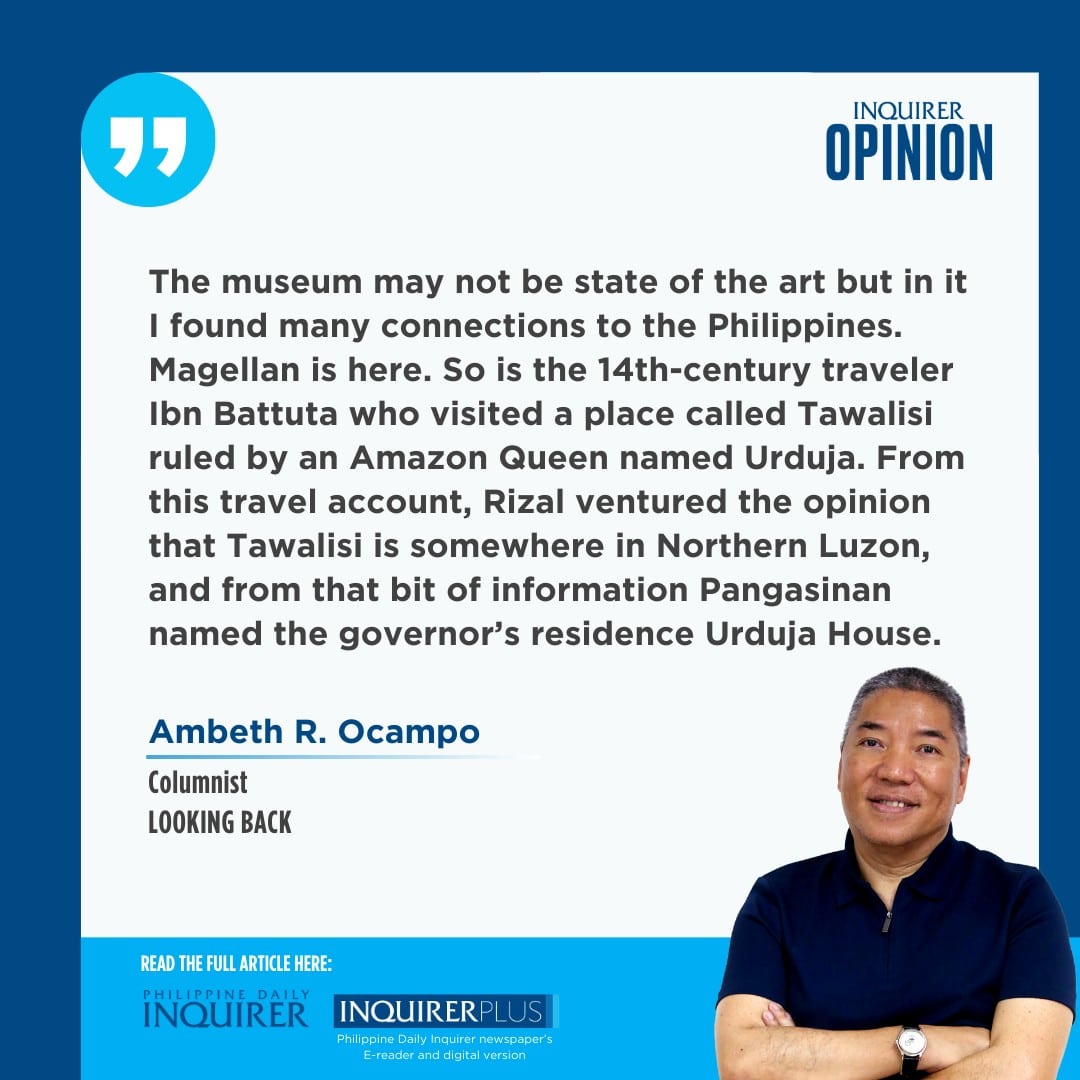Early PH-Indonesia relations
An archipelagic nation like the Philippines should have a maritime museum, to connect the land-bound Generations X, Y, and Z with their water-bound past. The closest to a maritime museum is the National Museum of the Philippines branch in Cebu which curatorially brings visitors back to the time of Humabon and Lapulapu, and even earlier.
It is worth a visit because many important artifacts and art, once displayed in “Imperial Manila” have been sent to Cebu where they are doubly relevant. On the ground floor are three paintings depicting the Spanish contact, based on the accounts of Antonio Pigafetta, the chronicler of the Ferdinand Magellan expedition. These are by National Artists Fernando C. Amorsolo, Carlos V. Francisco, and Vicente Manansala. Amorsolo painted the Battle of Mactan, Francisco the presentation of the Santo Niño to Humabon’s wife, christened Juana for the Spanish Queen who has gone down in history as “Juana la loca” or Joanna the Mad. Manansala painted the planting of what we know today as “Magellan’s Cross.”
Article continues after this advertisementIt is on the second floor that the magic begins with a display of the flora, fauna, and geological beginnings of the Philippines, culturally important objects excavated from archeological sites in Cebu. There is an exhibit of tradeware from China, Vietnam, Thailand, and Cambodia mute witnesses to the Philippines being at the crossroads of civilization a thousand years ago. There are important cultural properties here that I will not mention to make the visit to the museum a treasure hunt. Then the exhibit ends with the different types of boats in use today in different parts of Cebu.
I write this fresh from a quick visit to the Maritime Museum or Museum Bahari in Jakarta. I kick myself for missing this museum in my previous visits to Indonesia because it is tucked away in an 18th-century Dutch East India Company warehouse far from the usual tourist and shopping areas. The museum may not be state of the art but in it I found many connections to the Philippines. Magellan is here. So is the 14th-century traveler Ibn Battuta who visited a place called Tawalisi ruled by an Amazon Queen named Urduja. From this travel account, Rizal ventured the opinion that Tawalisi is somewhere in Northern Luzon, and from that bit of information Pangasinan named the governor’s residence Urduja House. There is an ongoing exhibition on maritime history from other countries and the Manila-Acapulco Galleon trade is re-presented with the cooperation of the Embassy of Mexico. Our embassy was notified about it too late to participate.
In the Museum Bahari, I saw several old cannons on display, many marked with “VOC” the initials of the ”Vereenigde Oostindische Compagnie” (Dutch East India Company). I have seen two cannons with similar markings at the Bastion de San Diego gardens in Intramuros and Plaza Pershing or the town plaza of Zamboanga. I brought this up in my lecture at the Museum Bahari sponsored by the Philippine Embassy in Jakarta under Ambassador Gina Jamoralin to commemorate the Maritime and Archipelagic Nation Awareness Month, which the Department of Foreign Affairs abbreviates as MANA-MO, meaning your inheritance, your birthright.
Article continues after this advertisementOne of the maps I showed in my presentation was the “Insula India Orientalis” by Mercator-Hondius which shows the Philippines in 1619 almost in the shape and form we recognize today. On the right hand of the map are two ships firing at each other, one Spanish, the other Dutch. Someone in the audience said that the ships I pointed out were anachronistic for a 1619 map because the Spanish-Dutch rivalry only took place in 1646. He did not know that there were earlier Dutch incursions into Spanish Philippines by Olivier van Noort in 1600, François de Witter in 1609, and Joris van Spilbergen in 1616. Seven naval battles between the Spanish and the Dutch took place in 1646 and the Spanish victory has been attributed to the intercession of the ivory image of Our Lady of the Holy Rosary, venerated in Santo Domingo church today. It is traditionally believed that this miraculous image of the Virgin, also known as La Naval de Manila, protected the Catholic Philippines from the heretical Dutch! One can only wonder what would have happened to Philippine history if the Dutch had succeeded in wresting the Philippines from the Spanish.
Finally, I mentioned the Japanese Christian samurai Hasekura Tsunenaga who headed the Keicho Embassy to Europe from 1613-1620. He was received by the Pope in Rome and the Spanish King in Madrid. His last stop was in “Ruson” where he wrote his son, saying he was all right and would return soon carrying “omiyage” or “pasalubong.” What he bought in Manila in 1619 were keris from Indonesia! It is amazing what historical connections between countries can be found if one knows where and how to look.
—————-
Comments are welcome at [email protected]
















